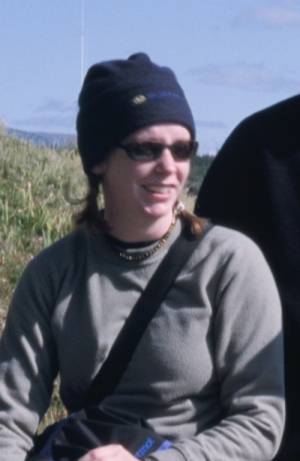Camilla Melrose

2000-The Michael J. Keen Award
B.Sc. (Honours) Thesis
Fossilized Forests of the Lower Carboniferous Horton Blufff Formation, Nova Scotia
(PDF - 8.6 Mb)
The Hurd Creek and Blue Beach members of the Horton Bluff Formation (Tournaisian) at Horton Bluff on the Bay of Fundy contain several forested levels. Evidence for standing trees is found in the form of moulds and casts of the base of trunks and in preserved decay hollows. The casts and hollows are preserved as sandstone/siltstone fills surrounded by shale, primarily within horizons of green shale. These shales are paleosols that cap progradational cycles formed by the infilling of mud-dominated brackish bays. The moulds are found in a sandstone/siltstone bed exposed on the wave cut platform. Abundant fossilized plant debris indicates the presence of Lepidodendropsis and of pterophytes, and potentially of Asterocalamites.
At least four forested levels have been identified in the Horton Bluff Formation. An 11-meter (horizontal distance) section of sandstone/siltstone exposed on the wave-cut platform contains 163 standing tree fossils spaced tens of centimeters apart. These trees range from 3 to 35 cm in diameter. A prominent 117-meter (horizontal distance) green shale observed in two dimensions contains 13 exposed casts and 8 exposed decay hollows, at the time of field work. The casts narrow upwards at approximately 58o from vertical, and have a maximum width and height of 88 cm and 22 cm, respectively. An additional fossilized horizon with decay hollows is seen further along the cliff.
The fossilized forests at Horton Bluff may be the oldest well-preserved forests in Nova Scotia. Similar structures could potentially be identified at previously overlooked locations, such as in older rocks with poor vegetative preservation. Additionally, an understanding of the vegetative cover in the late Devonian and early Carboniferous could lead to further understanding of the paleo-environment and ecology at that time.
Keywords:
Pages: 55
Supervisor: Martin Gibling



